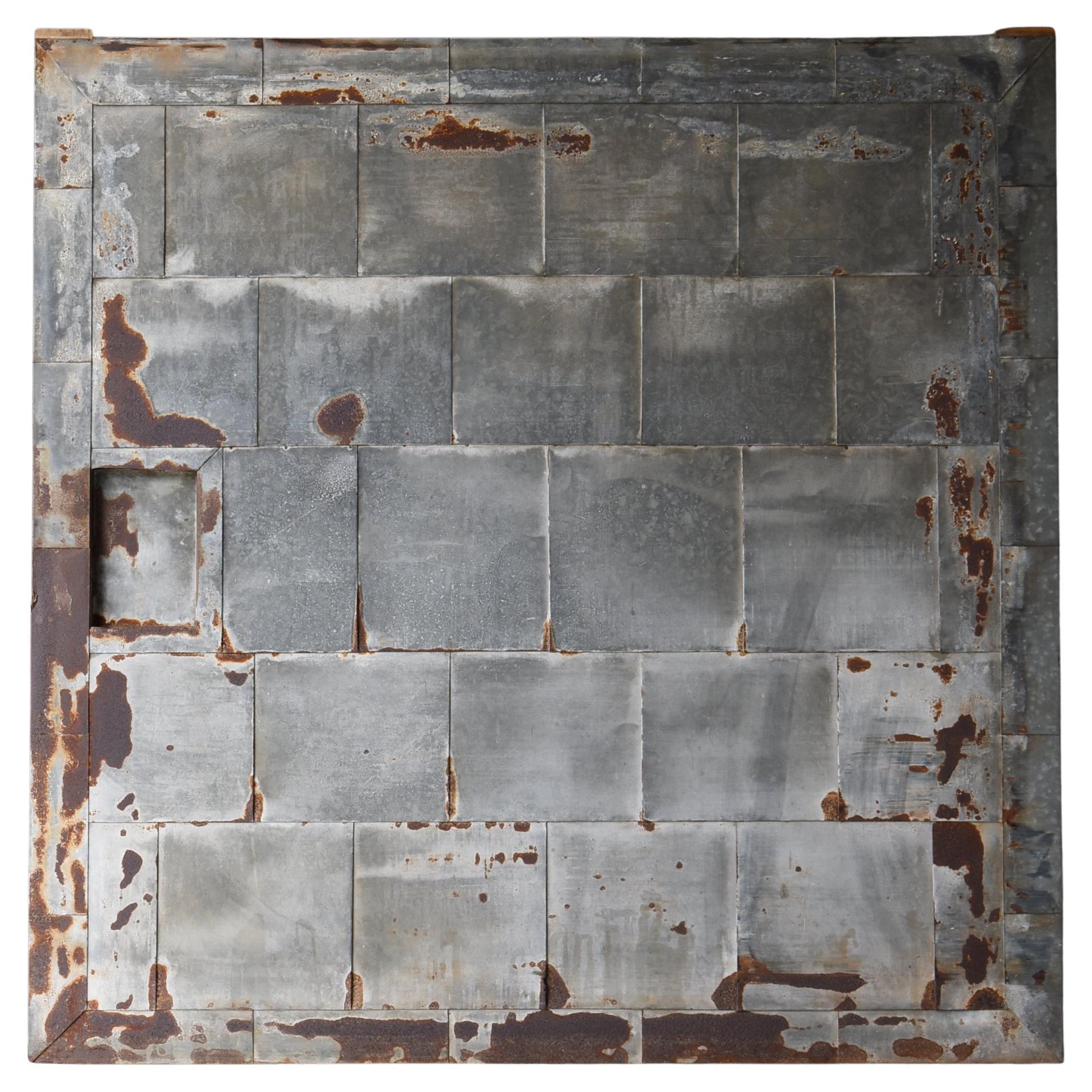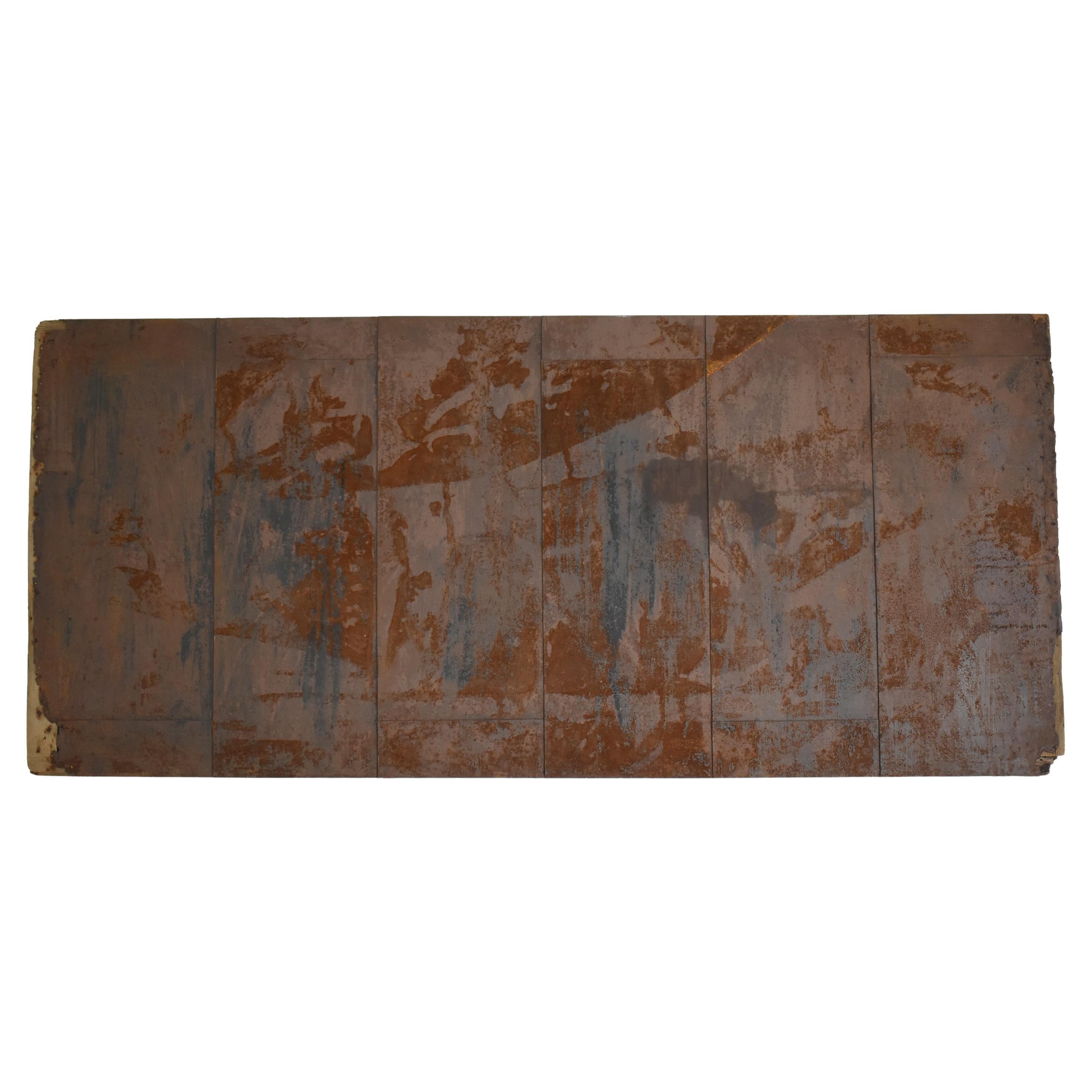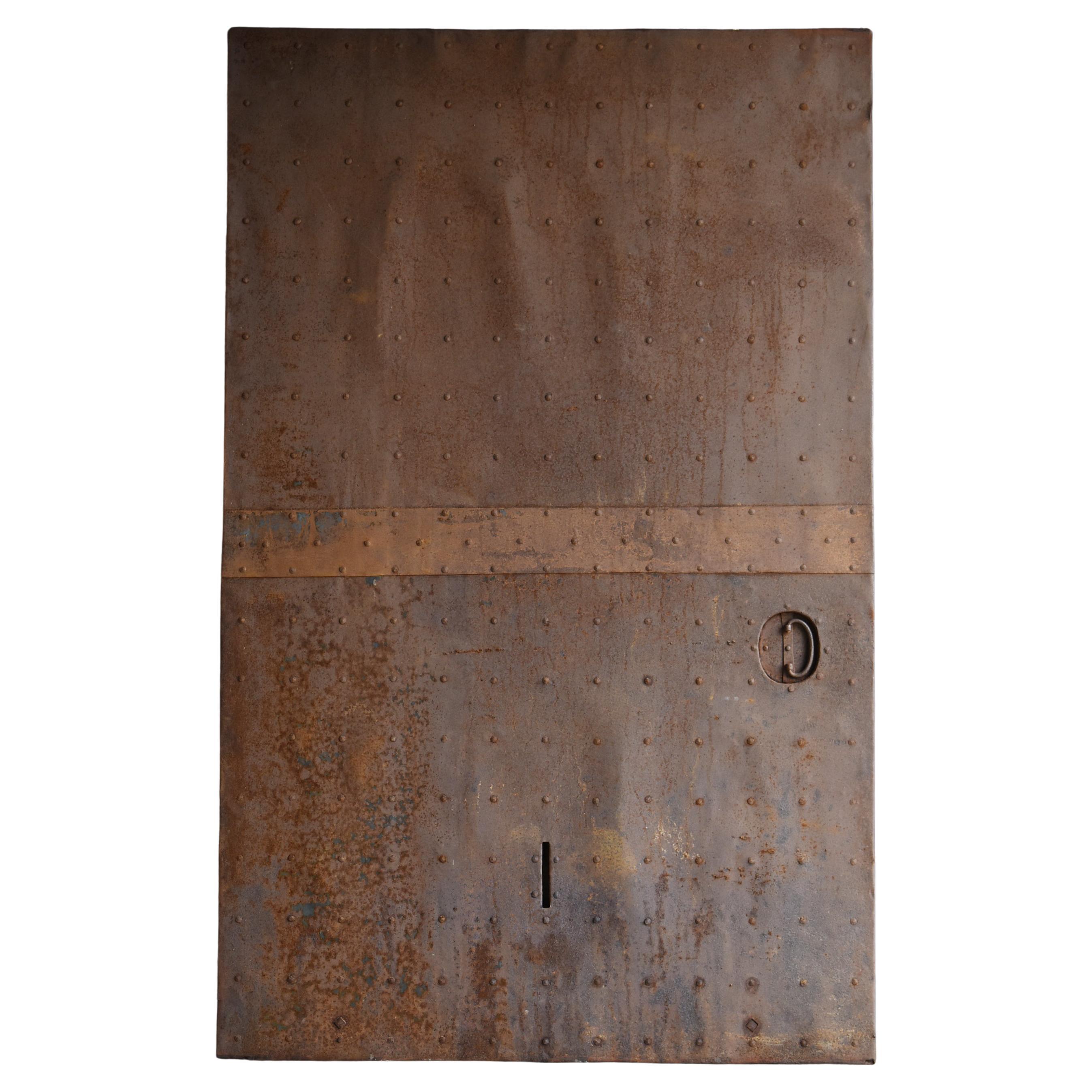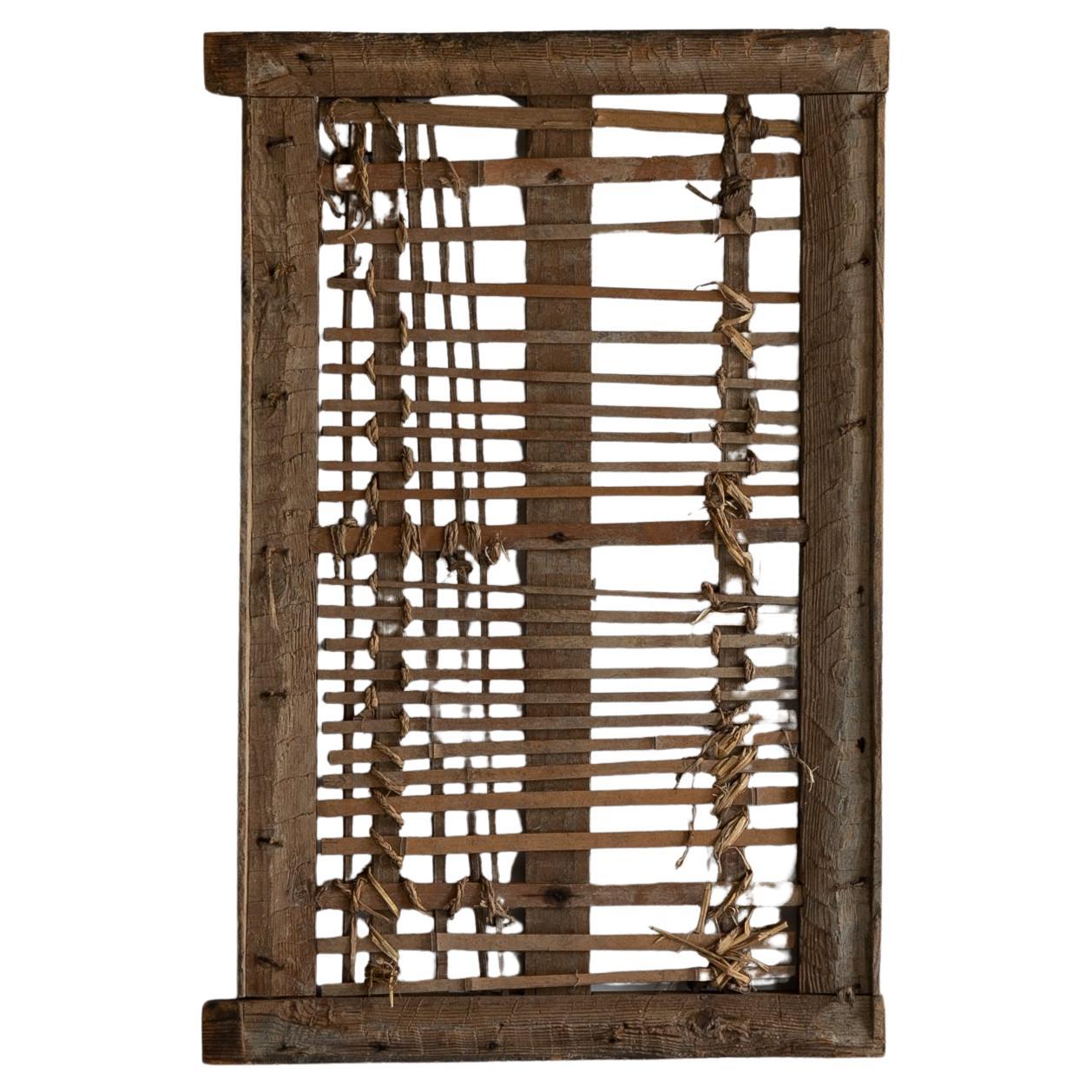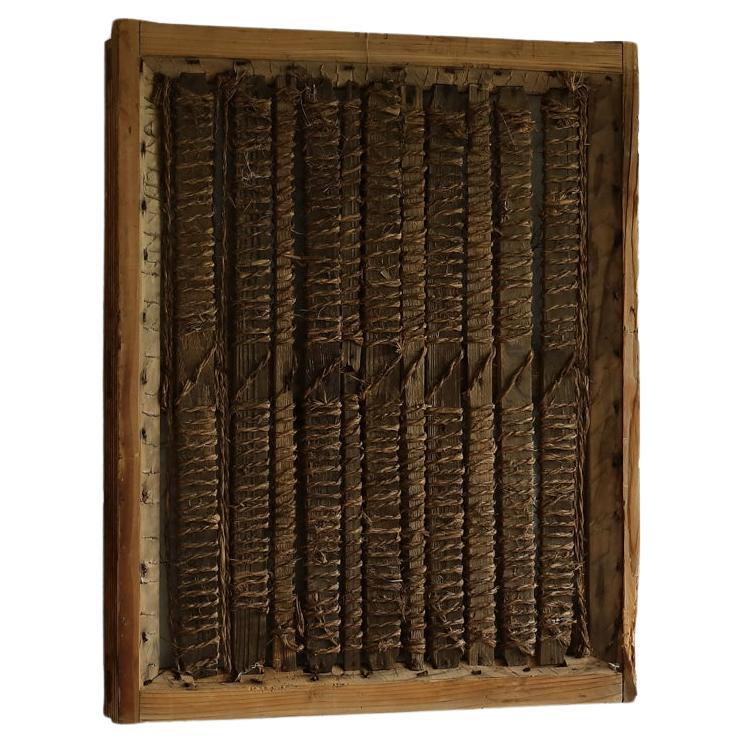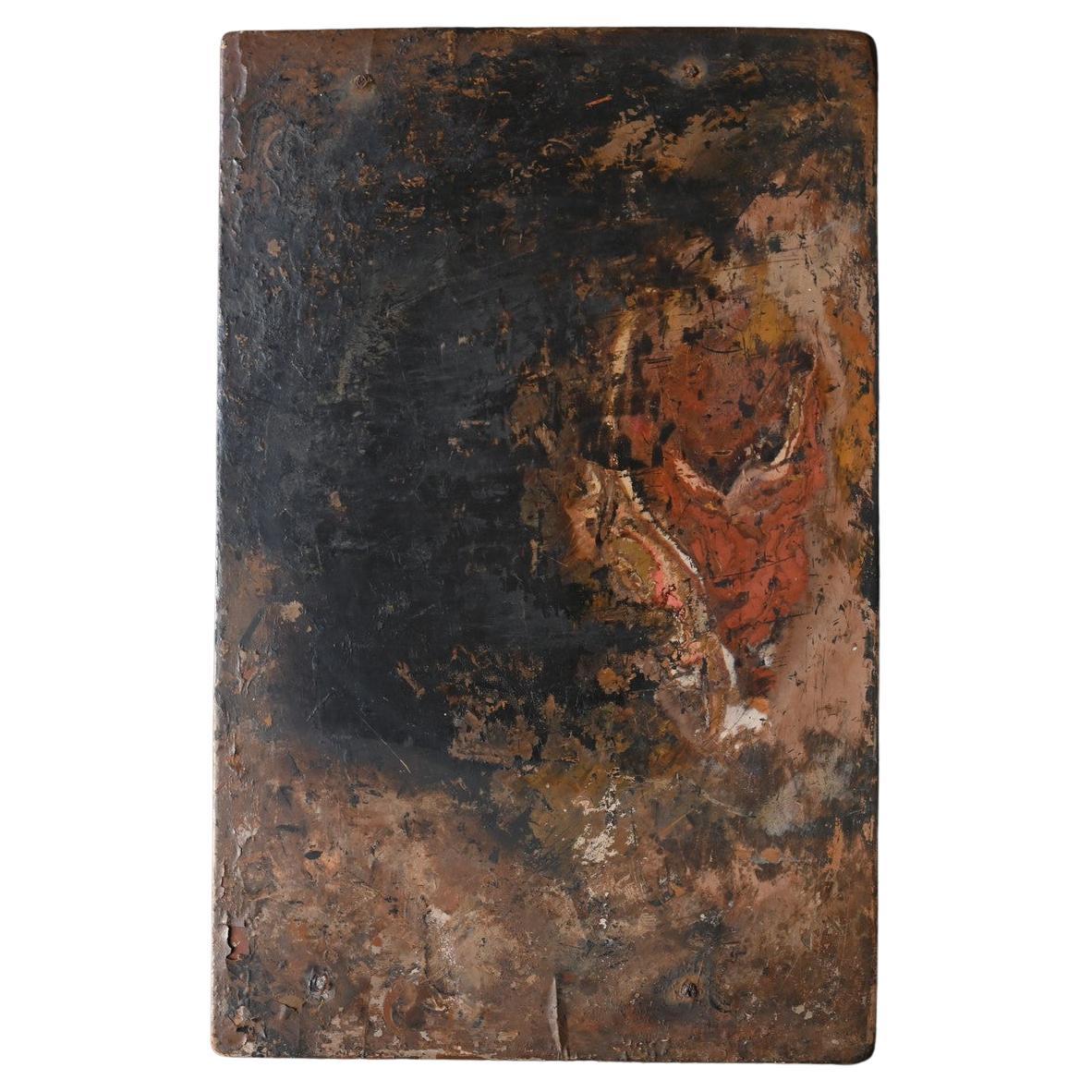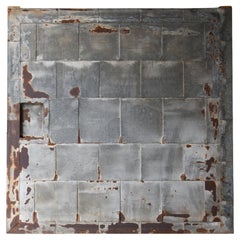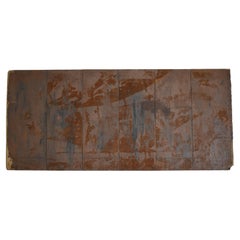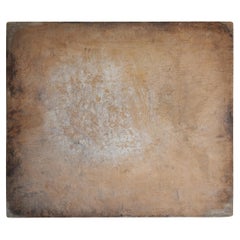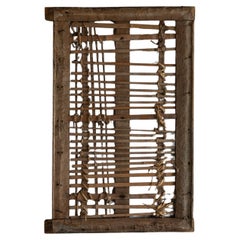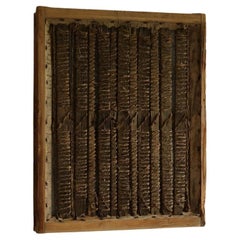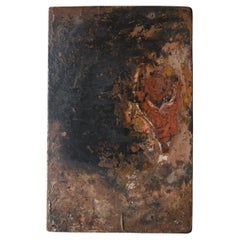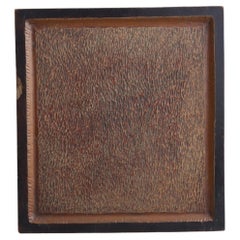Items Similar to Japanese Antique Copper-Clad Door 1860s-1900s / Abstract Art Wabisabi
Want more images or videos?
Request additional images or videos from the seller
1 of 18
Japanese Antique Copper-Clad Door 1860s-1900s / Abstract Art Wabisabi
$1,000
£743.92
€872.19
CA$1,398.63
A$1,561.61
CHF 819.36
MX$19,273
NOK 10,299.45
SEK 9,636.96
DKK 6,506.66
Shipping
Retrieving quote...The 1stDibs Promise:
Authenticity Guarantee,
Money-Back Guarantee,
24-Hour Cancellation
About the Item
This is an old copper-clad sliding door (small window) made in Japan.
It was used as part of the fittings during the Meiji period (1860s-1900s), and the surface is constructed of copper plates hammered onto a cedar wood frame.
Looking at the reverse side, the construction method of the time, in which bamboo was assembled and filled with soil, is still in place, retaining traces of the architectural culture.
The reason for covering with copper plates was extremely practical: to increase fire resistance. During the Edo and Meiji periods (1600s-1860s), many copper-plated fittings were used as a device to make houses more resistant to fire, but very few of them remain today.
The surface of this door has been oxidized over the years, giving it a distinctive blue-green color called rokusho. Although it is metal, it has the look of an abstract painting, showing the random beauty that only nature's time can depict.
It is a piece that gives a strong presence to your space, whether you hang it on the wall like an art panel or display your favorite objet d'art on it. The uneven surface, rivet marks, and rippling of the copper are also the beauty of form created by chance.
We hope you will enjoy the spirit of “wabi-sabi” - the beauty that resides in things that are not perfect and things that decay.
Weight: 7.5 kg
_________________________________________
Our Philosophy
Objects always tell the truth.
All I can do is just to face with them sincerely and give
them deep affection as much as I can.
There is no boundary of nationalities and of eras in beauty.
But I think now is the time we choose 'Japanese style' and it
will be the best way to remind us of what we are losing
today and to question us about an essence of beauty again.
I hope that you can touch the memories which the objects here have,
feel and think of something invisible but exists undoubtedly.
- Similar to:Axel Vervoordt (Designer)
- Dimensions:Height: 20.87 in (53 cm)Width: 18.51 in (47 cm)Depth: 2.17 in (5.5 cm)
- Style:Meiji (Of the Period)
- Materials and Techniques:
- Place of Origin:
- Period:
- Date of Manufacture:1860s-1900s
- Condition:Wear consistent with age and use.
- Seller Location:Chōsei District Nagara, JP
- Reference Number:1stDibs: LU10403245561242
About the Seller
New to 1stDibs
Joined in the past six months.
5.0
Gold Seller
Premium sellers maintaining a 4.3+ rating and 24-hour response times
Established in 2017
1stDibs seller since 2025
10 sales on 1stDibs
Typical response time: 3 hours
- ShippingRetrieving quote...Shipping from: Chōsei District Nagara, Japan
- Return Policy
Authenticity Guarantee
In the unlikely event there’s an issue with an item’s authenticity, contact us within 1 year for a full refund. DetailsMoney-Back Guarantee
If your item is not as described, is damaged in transit, or does not arrive, contact us within 7 days for a full refund. Details24-Hour Cancellation
You have a 24-hour grace period in which to reconsider your purchase, with no questions asked.Vetted Professional Sellers
Our world-class sellers must adhere to strict standards for service and quality, maintaining the integrity of our listings.Price-Match Guarantee
If you find that a seller listed the same item for a lower price elsewhere, we’ll match it.Trusted Global Delivery
Our best-in-class carrier network provides specialized shipping options worldwide, including custom delivery.More From This Seller
View AllJapanese Antique Huge Tin-Plated Door 1920s-1940s / Abstract Art Wabi Sabi
Located in Chōsei District Nagara, JP
This is a huge door of a Japanese-made warehouse.
It is a sliding door made in the early Showa period (1920s-1940s), and the craftsmanship of the time is evident throughout.
The surf...
Category
Vintage 1910s Japanese Showa Doors and Gates
Materials
Tin
Japanese Antique Large Iron Plate Abstract Art 1900s-1940s / Wabi Sabi
Located in Chōsei District Nagara, JP
This is a door that was an iron plate door made in Japan.
It is an old fixture made in the early Showa period (1900s-1940s), with iron plates carefully stretched over a cedar wood fr...
Category
Mid-20th Century Japanese Showa Decorative Art
Materials
Iron
Japanese Antique Iron Plate Door 1860s-1900s / Low Table Sofa Table Wabi Sabi
Located in Chōsei District Nagara, JP
This is an iron plate sliding door made in Japan.
It is a rare door made in the Meiji period (1860s-1900s), and the craftsmanship of the time still lives on today.
The structure is m...
Category
Early 20th Century Japanese Meiji Doors and Gates
Materials
Iron
Japanese Antique Dough Board Wall Art 1879s / Display Stand Wabi Sabi
Located in Chōsei District Nagara, JP
This is an old noodle board made in Japan.
On the back, it is inscribed “明治十二年” in writing, clearly indicating that it was made in 1879s.
Over 140 years have passed, and this piece s...
Category
Antique 1870s Japanese Meiji Decorative Art
Materials
Cedar
Japanese Antique Large Paper Mat "Abstract art" 1860s-1920s / Wabi Sabi
Located in Chōsei District Nagara, JP
This is a very old Japanese matte paper.
It was made during the Meiji period (1860s-1920s) and is very large, measuring approximately 1900 mm x 1420 mm.
The Japanese paper is carefu...
Category
Early 20th Century Japanese Meiji Decorative Art
Materials
Paper
Japanese Old Galvanized Iron 1920s-1940s / Abstract Art Object Wabisabi
Located in Chōsei District Nagara, JP
This is an old Japanese tin. It has been lying in this condition in an old warehouse for many years.
Judging from the texture and feel, it is estimated to have been manufactured in t...
Category
Mid-20th Century Japanese Showa Metalwork
Materials
Tin
You May Also Like
Japanese Antique Door "Wall Decoration" 1860s-1900s / Abstract Art Wabi Sabi
Located in Sammu-shi, Chiba
This was a very old Japanese warehouse (kura) window sliding door.
It was made during the Meiji period (1860s-1900s).
The frame is made of cedar wood and the lattice is bamboo.
It w...
Category
Early 20th Century Japanese Meiji Decorative Art
Materials
Bamboo, Cedar
Japanese Antique Door, Abstract Art Wabi Sabi, 1860s-1900s
Located in Katori-Shi, 12
Very old Japanese sliding door.
The simple design conveys the charm of the material.
You can feel the world of wabi and sabi.
Recommended as a wall painting.
It was made in the Mei...
Category
Early 20th Century Meiji Doors and Gates
Materials
Wood
Wooden work board of an old Japanese lacquerware craftsman/wall hanging object
Located in Sammu-shi, Chiba
This is a workbench used by a lacquerware craftsman around the Showa era. Originally, it was a workbench with drawers, but the drawer portion has been lost, leaving only the top boar...
Category
20th Century Japanese Showa Paintings
Materials
Wood
Japanese Antique Wood Carving Wall Panel, Abstract Art , Wabi Sabi
Located in Katori-Shi, 12
This wall-hanging carved wooden ornament is made from recycled zelkova wood from a kotatsu table from the Meiji period.
The beautiful grain of the wood has been carefully carved by ...
Category
Early 20th Century Japanese Meiji Doors and Gates
Materials
Wood
Evolving Elegance: An Oxidized Silver Screen from the Meiji Period
Located in Fukuoka, JP
This anodized 6-panel screen captures the serene and minimalistic beauty of a bamboo grove, embodying the aesthetic principles of the Edo period. The screen features subtle and delic...
Category
Antique 18th Century Japanese Edo Paintings and Screens
Materials
Silver Leaf
Japanese Antique Wooden Board , Wall Decoration Abstract Art , Wabi-Sabi
Located in Katori-Shi, 12
This wooden board was made in the Taisho era.
It was used as a "mochi board." A "mochi board" is a board from the Meiji era that was used as a workbench for kneading flour, and is m...
Category
Early 20th Century Japanese Taisho Doors and Gates
Materials
Wood
